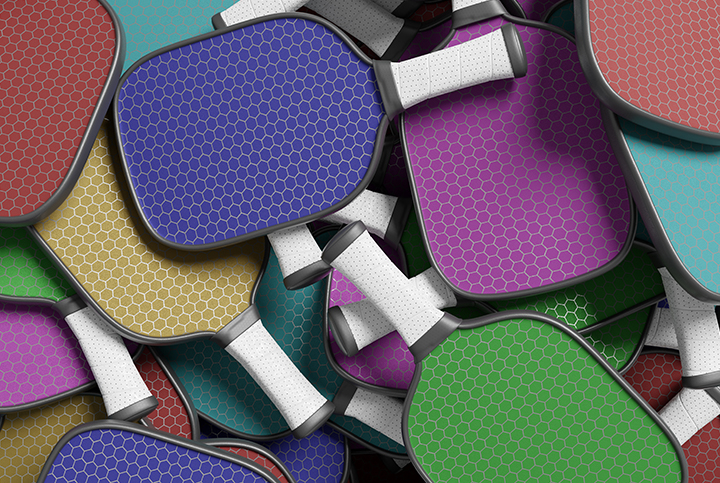Quieter Pickleball Paddles and Balls

Pickleball sound is sometimes called a “pop” and it is caused by a hard plastic ball striking a stiff surface paddle that vibrates as it hits a ball. This vibration continues after the ball has left the paddle face and it causes changes in air pressure which we hear as a “sound.” This vibration has numerous audible components but it often has a “pitch” or perceived audio tone concentrated around 1,000 cycles per second or 1,000 Hertz (Hz). This happens to be near musical note C6, in case you are familiar with music note terminology.
Human hearing is usually sensitive to this kind of pitch, since speech has lots of content in this frequency range. Humans generally are more annoyed by an extraneous sound with this pitch compared to a low pitch, such as a “thud.” A pop in this range gets our attention and that is why backup alarms and other warning beeps are also in this range.
Tennis and other sports with softer balls and less rigid hitting surfaces that contain holes are quieter and usually of a lower pitch and they therefore cause less annoyance. A softer pickleball can help and softness does vary between balls, but player preferences will be important. In areas where there are public courts, most of the balls in use will tend to be of the harder variety, such as the Dura 40 and the Franklin-X. On private courts, as in many gated communities, balls that are a softer (like the Onix Fuse) are sometimes mandated, and that reduces the sound level of all ball strikes by a few decibels, which helps, but this is not generally sufficient to solve a sound problem. Our tests show that the quietest USA Pickleball Approved ball is the Monarch gen 2 outdoor ball. It is also the softest, which is the reason it is the quietest.
Paddles vary also. A softer face paddle, which generally enhances ball control and spin, but which sometimes costs more, will reduce the sound level. A thicker paddle will usually vibrate at a lower rate and produce a lower the pitch but, again, at a somewhat higher cost per paddle.
PSM LLC has constructed an anechoic chamber, shown in the photo above, designed for accurate paddle testing. This chamber enables a drop of a ball from a fixed height that strikes the sweet spot of a paddle under test in an echo free environment. A calibrated microphone and suitable software analyzes the sound generated. Here is a link to more information about this test bed. In the near future, this site will provide a list of measured test results for many popular paddle models. This list will be updated automatically when new models are tested in the anechoic chamber in an effort to keep it up to date. Communities, clubs and individuals can select paddles from this list that will assist in making the sound of pickleball acceptable to neighbors. A list of ball sound ratings will also be published.
PSM LLC can customize a list of recommended gear for your community as part of an effort to achieve a maximum sound level goal. The combination of quieter paddles and balls can provide a significant sound level reduction for non-public court settings. It is worth noting that there is now effort underway at some paddle manufacturers that may result in innovative paddle designs that are quieter and still perform well.
